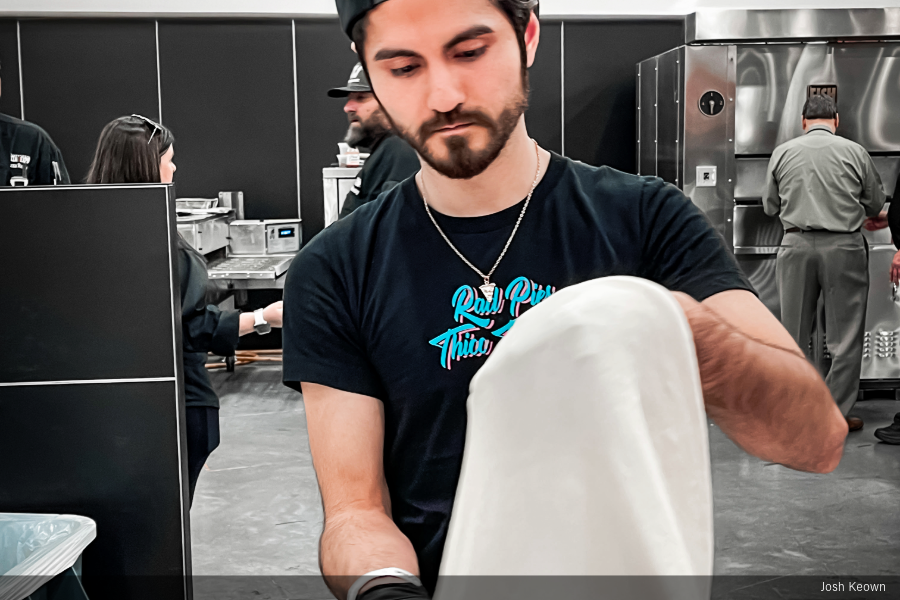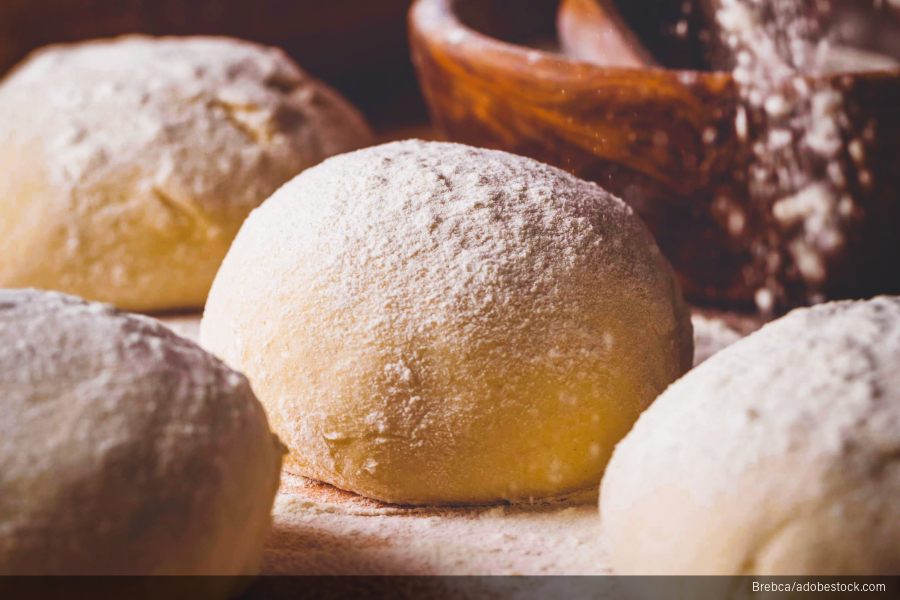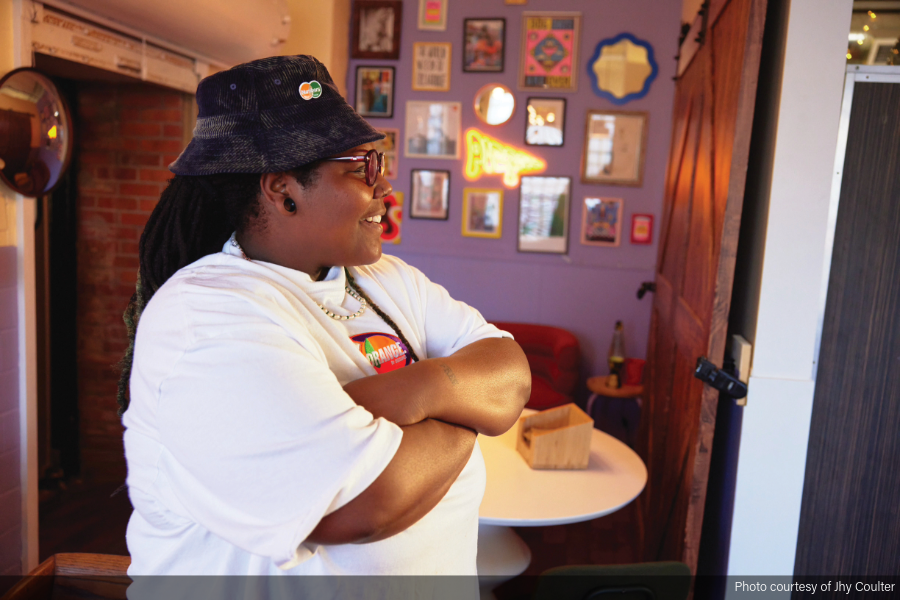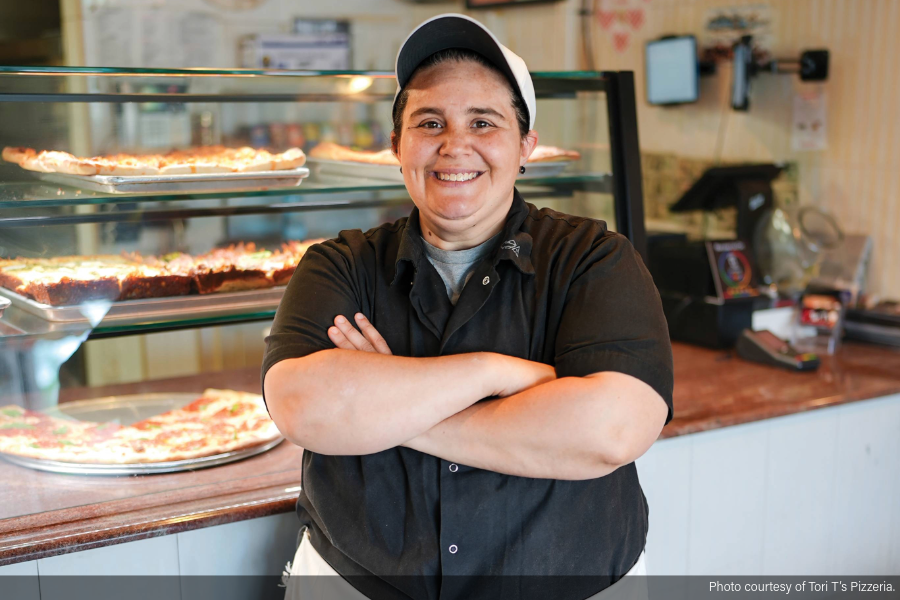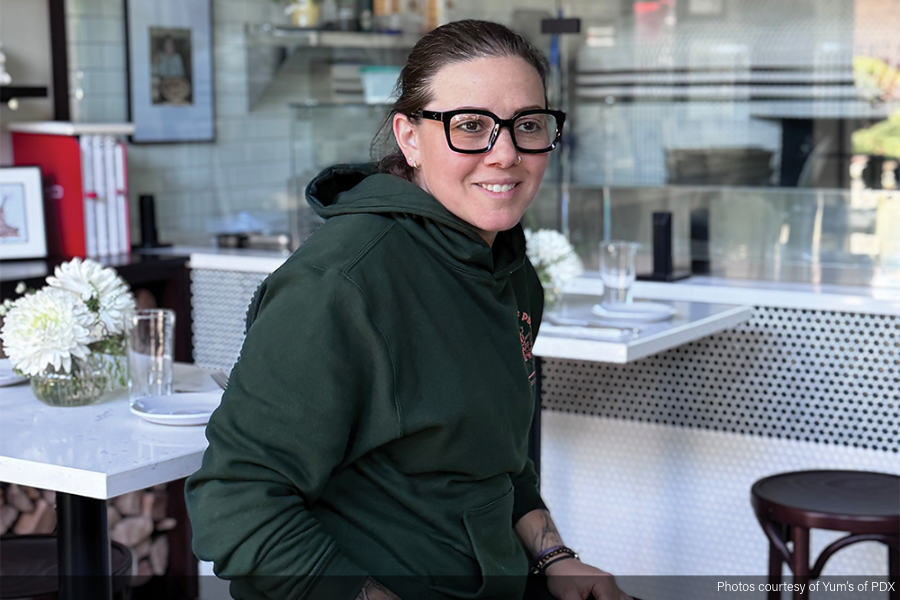Compete to Win: Competition Pizza Dough
So, you’re thinking of competing in a pizza contest? Welcome to a whole new world of pizza, where friends willing to help you are as necessary as remembering to bring the flour to make your dough. Competitors and the quality of pizza seen at competitions these days are getting more and more fierce. Knowing how to make your dough in potentially the weirdest of conditions could be the difference between first place and last place.
The more often you compete, the more little odds and ends you learn to be successful competing in any country. But if you’ve never done it, here’s what you need to know.
For those who have no help whatsoever, I recommend choosing a competition in your home country first.
This will give you a leg up when it comes to sourcing ingredients and being able to successfully shmooze your way into a hotel kitchen, if needed, because you already know the language and small cultural norms that foreigners always miss.
When it comes to making your dough for the first time, you want to check if the competition is supplying anything for you or if you are liable to bring everything. Competitions in the U.S. tend to have more prep items such as mixers, space in a fridge overnight and even small wares such as bowls and scales. Competitions outside of the U.S. normally will provide you with a prep area outfitted with tables, a communal sink and, occasionally, access to flour.
Depending how far you need to travel for a competition, this will determine when you need to make your dough. If the time works out correctly and you know you can keep your items cold, making your dough at home – in your known kitchen – and then transporting it in a cooler could be your best bet.
I’ve done a whole host of weird things for competitions and pissed off my fair share of hotel cleaning staff. For my first competition abroad, I arrived with flour, a can of tomatoes, the pan I needed and a prayer. I was in Italy on a Sunday – when most stores are closed – and needed to make dough. But what do you make it in? Well, this was at a time when I knew how to make dough by hand, but I hadn’t needed to do so very often. I found the smallest container possible for my starter, ruining the curtains and carpet, and ended up making my dough in the hotel trash can. Don’t worry, I washed the trash can many, many times.
Timing was crucial at this stage, and figuring out how to keep my dough cold until the competition was a main priority. Keeping dough and ingredients cold can be the hardest part. Portable coolers, ice packs and fermentation techniques will see you through. If you arrive and you do not have a mini fridge, lowering your yeast percentage or bulk fermenting can help. Don’t keep your room too hot if your dough needs to sit out, and asking for ice is always a strategy. I have shmoozed and smiled my way into many hotel kitchens. Sometimes, sharing a glass of wine with the staff could mean extra ice or even being able to store items in their fridge.
Knowing how to make dough by hand is a critical skill in competions. You never know when you will be able to make dough and where. If the desk in your hotel room is the place it needs to be made, then you sure better know how to do it.
When it comes to judging, there isn’t one golden recipe that will get you to the podium.
A winning dough is a combination of your recipe and proper execution. The first things judges look for is how well cooked the crust is. Is the coloring uneven? Has the bottom browned well? How soft or crispy is the dough, and is there a noticeable gum line? Most judges will poke and prod the pizza, first looking for any visible flaws before proceeding to the tasting portion.
The category will determine the type of bake, but in the U.S., floppy slices are a no-go these days. For some categories, such as Neapolitan, flop is not an indicator of a poor bake, so this is not always a hard and fast rule. If a contestant is trying to present a tavern style or a New York slice, crispy is the name of the game.
Waiting in line for judging can be the limiting factor that changes your pizza from crispy to floppy, and it is completely out of your control. Organizers know how troubling waiting is for hot food – and they try their best to be prompt and timely – but anticipating this with the use of a screen or checking in before you start is helpful. Once you begin, the timer starts, so checking in before you touch anything is best.
The inside crumb is a clear indicator of well stretched and well-cooked dough. The dreaded gum line is a dead giveaway for poor stretching techniques, cold dough or improper temperatures coming from ingredients or a too-hot oven. An open crumb should look like a spiderweb. Charring and bubbles aren’t necessarily a bad thing, but anything considered excessive will work against you.
One of the mistakes I see made over and over by new competitors is nerves getting the best of them. While cooking, it can be easy to let the anxiety of the situation win out. Usually, this happens in the form of pulling your pizza out of the oven too quickly when those last 30 seconds could have made the difference. There are going to be people rushing you, but remember: Your cook time is your cook time. Do not pull that pizza out until you are 100 percent sure it is done.
For tasting, judges want to see not just a well-made pizza, they want to taste and smell well-made dough.
There’s a distinct smell that comes with well-fermented dough. Young dough has a very prominent raw flour aroma, whereas a well-fermented dough has some acidity and sweetness to it. Well-rounded and cohesive flavors are preferred.
All in all, competition dough comes down to execution and a recipe. Get comfortable with being uncomfortable, and no competition is out of reach.
Laura Meyer is the owner of Pizzeria da Laura in Berkeley, CA.
>> Explore answers to more common pizza dough questions in Troubleshooting your Pizza Dough: What’s wrong with my pizza dough? <<
